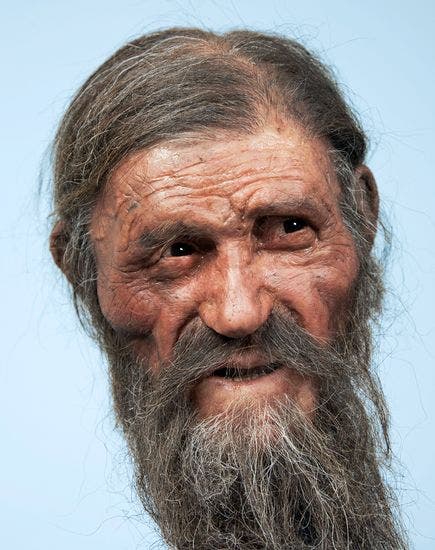Ötzi the Iceman goes by lots of names – the Similaun Man, the Man from Hauslabjoch, the Hauslabjoch mummy, etc – but most people just call him Ötzi; he’s a well-preserved natural mummy of a man who lived about 3,300 BCE, found in the Ötztal Alps (hence the name) near the border of Austria and Italy. Now, according to a genetic study on the origins of people who inhabit Austrial Tirol, he has at least 19 living male relatives.

Scientists from the Institute of Legal Medicine at Innsbruck Medical University analyzed DNA samples taken from 3,700 blood donors in the Tyrol region of Austria and found that 19 male individuals share a similar, particular mutation with the 5,300-year-old mummy, whose full genome was published last year. In other words, they’re distant relatives to Ötzi.
In order to reach this conclusion, researchers focused on parts of the human DNA which are generally inherited unchanged – trying to find people from the same haplogroup (people with the same mutations that share a common ancestor).
“In men it is the Y chromosomes and in females the mitochondria. Eventual changes arise due to mutations, which are then inherited further,” Parson explained.
Coincidentally or not, Ötzi’s haplogroup is very rare in Europe.
“The Iceman had the halogroup G, sub category G-L91. In our research we found another 19 people with this genetic group and subgroup,” Parson said.
Found in 1991 by a couple of German tourists, the mummy had a very unpleasant fate, as CT scans revealed that an arrowhead had lacerated his left subclavian artery, leading to fast bleeding. Ötzi is one of the most studied corpses in the world: researchers also know that he had brown eyes and very bad teeth, was lactose intolerant, had a genetic predisposition for an increased risk for coronary heart disease and probably had Lyme disease. Things didn’t look that good for Ötzi even without the arrowhead. So far, the 19 individuals haven’t been informed about their kinship to Ötzi, but researchers will notify them in the near future, and hopefully, will continue their research in the area.
“We have already found Swiss and Italian partners so that we can continue our research,” he said.
Was this helpful?



